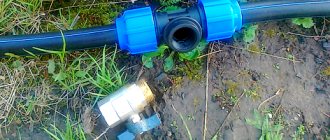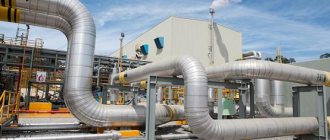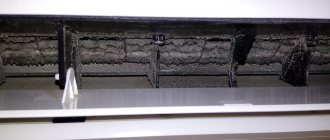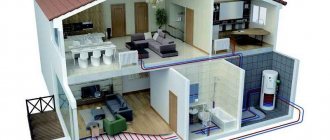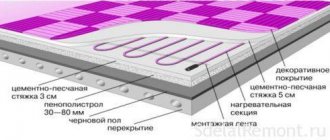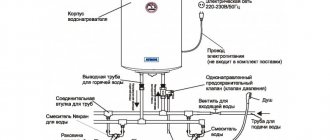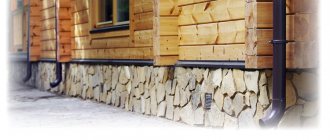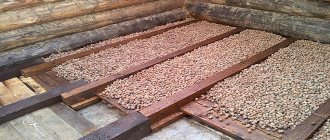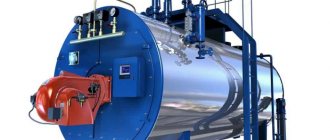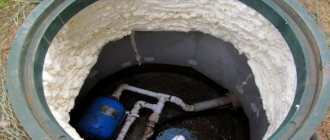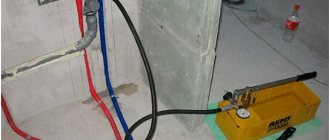Form
There are no standardized forms for preparing such a document. Accordingly, a free writing style is allowed here. Although companies are allowed to develop letterheads, which will be fixed in accounting policies. If desired, the standard template can be downloaded online.
Main reasons for conservation
There are a number of reasons why this event may be necessary. The most popular of them:
- the organization has temporarily ceased its activities;
- operation of the equipment for a certain period of time is impractical;
- accidents that make it impossible to use the equipment. Moreover, accidents can be both natural and man-made;
- the equipment has been under repair for more than three months, therefore it cannot be used in production;
- Equipment operation is seasonal.
Who decides to mothball equipment?
No one other than the CEO can make such an important decision. But before “freezing” the equipment, it is necessary to take an inventory of it. This is necessary in order to know exactly what equipment and in what condition is subject to conservation. In addition, inventory allows you to create a clear list of equipment whose operation is temporarily suspended. At the same time, by his order, the manager appoints employees who will be responsible for the safety of the “frozen” equipment. After this, the manager issues an order to carry out the conservation procedure.
Of course, situations may arise when it is necessary to preserve equipment in the absence of the director. For example, if he is on vacation, a business trip, or on sick leave. In this case, the decision on conservation can be made by his deputies, if such powers are specified in their job descriptions.
Preservation with dry air
9. Recommendations for preparing equipment for preservation with dry air
Before placing equipment for preservation, it is necessary to carefully carry out all preparatory work related to freeing the preserved equipment from residual moisture and preventing accidental introduction of moisture during preservation. If there are elements, components or parts that cannot be dried inside an installation subject to dry preservation, then it is necessary to dry them using special measures before starting the preservation process and ensure complete removal of water from the entire water-steam path of the equipment being preserved, incl. from containers, vessels, hanging coils, U-shaped heat transfer tubes, etc.
To achieve this condition, it is necessary to ensure that the equipment is emptied immediately after it is stopped, while still warm and at a pressure above atmospheric pressure. In some cases, to increase the efficiency of moisture removal, it is advisable to provide steam heating of equipment surfaces (for example, water heating boilers with external steam).
This allows, due to the heat accumulated by the metal, lining and insulation, to maintain the temperature of the metal above the saturation temperature at atmospheric pressure. In this case, the internal surfaces of the equipment to be preserved are dried. For complete guaranteed removal of water from the U-shaped heating surfaces of steam superheaters of power boilers (both drum and direct-flow), immediately after shutting down the boiler, a dry shutdown should be carried out in accordance with [2].
If accelerated cooling devices are available, it is recommended to shut down drum boilers using these devices in accordance with [10]. If the steam boiler has not been used for a long time, moisture may condense in the U-shaped tubes. In these cases, it is recommended to melt the boiler, raise the pressure in it to 1.5–2.0 MPa, maintain this pressure for several hours, and then carry out a dry shutdown again.
Dry shutdown is used only if there are no pipe-to-drum rolling connections in the boilers. Therefore, boilers with undrained U-shaped heat transfer tubes and pipe-roll joints with a drum cannot be preserved using dry air. Emptying equipment under pressure and drying the surfaces must be carried out, even if preservation with dried air will not be carried out immediately, but after carrying out the required repair work.
The mothballed equipment must be reliably disconnected from existing water or steam pipelines by tightly closing the shut-off valves, and if a hermetically sealed shutdown is not possible, it must be protected from incoming moisture using additional shut-off valves with inspection (drainage). Experience in the conservation of steam turbine units shows that special attention should be paid to the guaranteed shutdown of the following steam and water flows: steam supply from the general station manifold to the ejector and seals; supply of chemically treated water from the general station collector; supply of network and circulation water from the general station collector. When turning off the flows, it is necessary to keep the drainage valves (inspections) open after the shut-off valves or plugs are turned off to ensure the drainage of possible leaks.
When developing a circuit for supplying air to a turbine unit or other equipment, one should take into account the possibility of forced lifting of the shut-off bodies of check valves (KOS - stationary shut-off valve). If this is not possible, then to preserve, for example, regenerative heaters, it is necessary to provide either an air supply into the pipeline between the WWTP and the heater, or disassembly and removal of the WWTP shut-off valve, or an air supply through the heating steam drainage line.
Sections of pipelines through which the conservation scheme provides for air movement must be completely emptied. If, according to the routing conditions of the pipelines, their emptying is impossible, additional drainage valves should be welded. For complete emptying, it is usually also necessary to insert drain valves into the condensate collectors of the condenser and network heaters. Since these drain valves are then most often used as exhaust vent fittings, they must have a sufficient nominal bore (at least DN 40).
The presence of closed check valves or undrained hydraulic valves in the conservation circuit prevents the movement of air in the circuit and makes it impossible to preserve it. Before storing turbines, special stops should be prepared to maintain the diaphragm, control and stop valves open.
10. Recommendations for organizing conservation schemes
The preservation scheme must ensure air supply to all areas of the equipment being preserved. For air purging, the equipment to be preserved and the air dryer are combined into a closed or open preservation circuit using standard and temporary pipelines and air ducts. It is desirable that the conservation scheme provide for the implementation of a combination of open and closed conservation loops.
10.1. Open-loop and closed-loop conservation circuits
With an open conservation scheme, dried air is supplied through air ducts into the internal cavities of the conservation object, assimilates water vapor and is discharged with it outside into the workshop room, or directly into the atmosphere through drains and blow-offs. The circuit allows you to easily control the air flow and its humidity at the outlet from any point in the preservation system. In a closed circuit, the air from the equipment being preserved is returned to the suction of the air dryer, so the closed circuit is more difficult to implement.
In addition, if during the initial period of preservation there may be droplet moisture in individual elements of the equipment, then air with a relative humidity of about 100% will return from the equipment to the dryer in a closed circuit. At such an initial humidity, the dehumidifier is unlikely to produce dry air with the required parameters, which will slow down conservation. Therefore, a closed conservation scheme requires more thorough preliminary drainage of the system.
However, during the period of time when the relative humidity of the air inside the equipment being preserved has already been reduced to the required value and only maintaining the achieved parameters is required, the closed circuit is more economical. An analysis of possible conservation schemes for both boiler units and steam turbine units showed that it is practically impossible to organize a completely closed air circulation scheme.
This is caused by such reasons as: the presence of inevitable air leaks through the end chambers of the labyrinth seals of steam turbines, the impossibility of taking air from some hard-to-reach points of its exit (blowing and drainage) due to the individual design and piping of the equipment; inappropriateness of air intake from blow-off points with an insignificant amount of escaping air, etc.
In addition, the air leaving some points of the equipment being preserved may have consistently high humidity. For example, if there are irreparable leaks in a non-switchable condenser, then the relative humidity of the air at the outlet of the condenser drain will always be close to 100% (in such cases, blowing the condenser with air is aimed at localizing water vapor directly next to the source, displacing it and preventing moisture from entering the rest volumes of equipment).
Of course, it is not advisable to return such air to the dehumidifier. Therefore, in practice, a scheme for returning air to the dryer suction from one, two or three points is usually implemented. In this case, the conservation scheme turns out to be partially closed. To implement it, it is necessary to technically competently organize the replenishment of the circulation circuit with air from the CTC premises to replace the air lost during circulation.
The latter circumstance was not taken into account several years ago at CHPP-7 in St. Petersburg, where, when preserving the flow part of steam turbines PT-25-90/10 and PT-60-90/13, a closed circuit was used with air suction from the end seals (to isolate the preserved volume from outside air). In this case, replenishment of the circuit with air was not provided, and air leaks that occurred in the initial sections of the circuit led to a vacuum in subsequent sections and to the replenishment of losses with moist air from the CTC through the turbine seals.
Subsequently, this led to the appearance of parking corrosion of the outermost labyrinth seals. Thus, during the initial period of conservation, it is preferable to use an open circuit. After the relative air humidity inside the equipment being preserved decreases to a value lower than in the workshop room, it is advisable to switch to a partially closed circuit.
10.2. Optimizing air flows inside equipment
To supply air from the dryer to the equipment being preserved and to supply air from one part of the equipment to another, standard pipelines and fittings should be used as much as possible. Since air from the dryer is supplied to the equipment, as a rule, through one, less often through two points, while several, sometimes more than a dozen points are usually used to release air, not counting unaccounted for air outlets, it is not allowed to connect the dryer through the fittings with a small flow area (drain valves, air vents, etc.).
It is also not recommended to introduce air into the equipment near possible sources of moisture, for example, through a condenser. The most critical part of a steam turbine installation, from the point of view of corrosion protection, is the turbine itself. Therefore, it is necessary to pass the main flow of dried air directed to the steam turbine unit, or at least pass most of it first through the turbine cylinders and only then direct it to other units, incl. into the condenser and then exhaust the exhaust air outside.
To preserve the turbine unit, several dry air supply points can be provided. The more points of entry of dried air, the better the preservation of equipment. On the other hand, increasing the number of air supply points complicates the circuit and increases costs. Based on this, one air supply point can be considered sufficient if it can be used to ensure the distribution of air with a given air exchange rate to all components of the turbine unit.
Since there can be many outlets for air, it is necessary, in addition to organizing the air supply, to be equally meticulous about its release from the equipment. For this purpose, standard drains opening into a funnel, vents, hatches of condensate collectors of condensers and boilers, emptying or emergency drain lines, air suction pipelines, end seals of turbines or specially installed exhaust ventilation fittings with shut-off valves can be used.
The number and location of air release lines are determined by the specific conservation scheme and the composition of the equipment being preserved. As practice shows, improper organization of air outlet leads to its uneven circulation inside the equipment, due to which the efficiency of preservation of individual elements is significantly reduced.
To increase the efficiency of preservation, it is possible to control the flow of dry air in different areas of the equipment being preserved by adjusting the cross sections at the air outlet points based on measurements of the relative humidity in the outlet fittings. Preservation experience has shown that a decrease in average humidity in complex multi-element equipment occurs faster with alternate, targeted supply of large quantities of air to each large element of the circuit (cylinders, condenser, regenerative heaters, network heaters, etc.).
The achieved low relative humidity in each of these units can then be maintained using a reduced amount of dry air.
10.3 Recommendations for preservation of several pieces of equipment
When mothballing several adjacent units of thermal power equipment, as a rule, it is advisable to combine them using supply and return (in closed conservation schemes) air ducts into a single preservation system with one or two air dryers.
This scheme makes it possible to redistribute drying air flows within the framework of one preservation system among individual objects, depending on the operating mode and putting into reserve of this or that equipment, as well as on the mode of its preservation (putting into conservation or maintaining in a mothballed state).
The use of integrated conservation systems makes it possible to use dryers with a lower capacity than would be required if the total capacity of the dryers was taken into account for each piece of equipment being preserved separately, and in addition, it ensures a more complete use of the power of the dryers with minimal downtime.
The use of a unified conservation system is especially effective if, according to operating conditions, the equipment combined into one circuit is alternately put into reserve. An alternative to the above recommendation is the use of mobile air dehumidifiers, which makes them quite easy to move and connect to the equipment being preserved during this period.
It is most appropriate to use the recommendations of this section for those energy enterprises where all equipment is never put into reserve, even during the warm season, and approximately half of the equipment remains in operation and is taken out of service one by one.
10.4. Choosing a location for installing a dehumidifier
When choosing the optimal location for installing a dehumidifier, it is advisable to identify places in the workshop with the lowest absolute humidity (moisture content) of the air. Air humidity in production premises depends on climatic conditions and operating culture. Relative air humidity varies widely (changes from 30 to 90% and even up to 100% are not uncommon within one day).
Very often there is a change in air humidity along the height of the room - usually, the higher the elevation of the room, the lower the air humidity. When choosing a location for a desiccant dryer with the same absolute air humidity values and equal installation conditions, preference should be given to a location with a lower air temperature. It may also be necessary to preserve the gas-air ducts of boilers.
The intensity of corrosion of gas-air ducts mainly depends on the type of fuel used. Currently, most thermal power plants use gas (or are switching to it) as the main type of fuel. Corrosion of gas-air ducts is practically not observed when boilers operate on gas. In case of switching to fuel oil as the main fuel, one can expect the appearance of highly hygroscopic sulfur-containing deposits in boilers on the flue gas side.
In this case, the issue of the need to preserve the gas-air ducts of boilers requires special consideration.
11. Recommendations for the conservation of equipment not put into operation
In a number of cases, there is a need to preserve new equipment that has not yet been put into operation and is in both the initial and final stages of installation, and sometimes even abandoned. This need is due to moisture condensation on the internal surfaces of equipment, which is a consequence of daily fluctuations in ambient temperature and the cause of parking corrosion.
For such objects, none of the conservation methods mentioned in [2] can be used. An alternative solution is to use methods for preserving thermal power equipment with air, mentioned in [1], and in particular using dried air. A feature of preserving such equipment with dried air is that in each specific case it is necessary to develop individual circulation schemes, which are determined not only by the type of object being preserved, but also depend on the stage of installation work.
In addition, a characteristic feature of the installed equipment is the presence of a large number of open volumes, i.e. points of exit of air supplied for preservation to the outside in the most unexpected places. This not only predetermines the impossibility of implementing a closed air circulation scheme, but also imposes additional requirements for the elimination of unnecessary air leakage points, especially near the points of air supply.
In this case, it is important to ensure that dry air is supplied to all volumes of the plant being preserved in sufficient quantities. In some cases, it is advisable to increase the amount of supplied air compared to what was recommended in section 7. It should also be borne in mind that during installation work, some specific conditions and emergency situations may arise, as well as changes in environmental parameters, which may be an obstacle to the quality conservation of equipment.
In such cases, adequate measures should be taken to prevent abnormal and emergency situations, as well as to prevent a decrease in the quality of conservation. For example, in conditions of high dust content typical for construction, it is recommended to use special filters on the dryer suction and clean them regularly.
A clear example of the real benefits of this approach is the conservation of the steam drum boiler with natural circulation Ep-670-13.8-545 GMN at CHPP-5 “Red October” in St. Petersburg (now Pravoberezhnaya CHPP). This boiler, which is part of a power unit with a T-180/210-130 turbine, has been in the installation stage and awaiting commissioning since the mid-1990s, when the TPP-5 reconstruction project was frozen for almost a whole decade.
The scale of standstill corrosion of the installed part of the equipment forced the management of the thermal power plant to take conservation measures. Preservation of the boiler with an adsorption air dryer began using an open-loop circulation circuit in 1998, when the installation work had not yet been completed. The dried air was supplied to the boiler drum, from where it was distributed in parallel uneven flows across the furnace screens, into the economizer and into the steam superheater system, and then discharged through drains and open (due to unfinished installation of the boiler) pipelines.
The low-pressure convective superheater was excluded from the conservation circuit. Even with this conservation scheme, based on the examinations carried out by the personnel of TPP-5, a satisfactory condition of the preserved surfaces was recorded in comparison with non-preserved ones. In 2000, when the main installation work on the boiler was completed, it became advisable to switch to a closed conservation scheme.
The air dryer was connected to the live steam pipelines, which made it possible, firstly, to ensure the return of exhaust air from the boiler to the dryer, but drier than in the CTC (this was especially important in the summer, when the relative air humidity in the workshop was high ), and, secondly, to use this scheme during routine shutdowns of the boiler after putting the facility into operation (when it became impossible to supply dried air directly into the boiler drum).
Through the live steam pipelines, the dried air entered the steam path of the boiler and sequentially passed through a high-pressure convective superheater, a screen superheater, radiation superheater screens, screens of the rear wall of the lower gas duct, screens of the ceiling superheater, screens of the side wall of the lower gas duct, screens of the front wall of the lower gas duct, and fence screens horizontal flue, after which the air entered the drum, where it was divided into two streams:
- passed through the combustion screens and through two remote cyclones, then through the lower (input) collectors of the corresponding screens and further into the general drainage collector, and from there returned to the dryer;
- through the hanging pipes of the economizer it entered the membrane economizer itself, collected in the collectors of the lower blocks (input) of the economizer and then returned back to the dryer.
Thanks to the measures taken, it was possible to stop the corrosion processes in the boiler before the installation of the turbine and the start-up of the power unit of the Pravoberezhnaya CHPP in May 2006.
Conclusion
This article mainly focused on issues that were not addressed in the current regulatory documents [1]. In addition, over the past decades, the world’s attitude towards energy saving and environmental issues has changed dramatically, and therefore most of the recommendations [2] no longer meet modern requirements.
Currently, throughout the world, equipment preservation with dry air is recognized as the only environmentally friendly method [6], which is one of the most economical with high preservation efficiency. Modern rotary adsorption air dryers fully meet these requirements, providing the required depth of air drying at the required air flow and pressure. At the same time, they are characterized by high reliability, ease of connection and control, as well as minimal maintenance.
Who signs and why is the equipment conservation act needed?
At first glance, it may seem that you can do without drawing up a document. Simply stop using the equipment. However, this is a misconception. It is necessary to draw up an act for several reasons:
- The act of conservation is documentary evidence that the company does not use this equipment. Accordingly, income tax is significantly reduced.
- Expenses associated with depreciation, repair and maintenance of the device are not written off, which is also a positive point for the company.
- The procedure for accounting for financial assets is significantly simplified.
It is not difficult to guess that one person cannot carry out the equipment preservation procedure. For this purpose, a special commission is created, the members of which must sign their autographs in the act. After this, the document is approved by the head of the company.
Preservation period
The manager, on whose initiative the conservation of equipment is carried out, determines the period of its inactivity. But there are certain limitations here. Thus, the minimum period for which equipment can be “frozen” is three months. The maximum conservation period is three years. The countdown of this period begins from the day when the act was approved by the director of the company.
You may encounter a situation where it becomes necessary to extend the preservation period. To do this, the manager must issue an appropriate order. But he must do this a month before the end of the main period. It also happens that after re-mothballing, when the equipment begins to be used again, there is a need for repeated “freezing”. But this can only be done after five months have passed. This period should be between two conservations.
Conservation of diesel power plants - why they do it and what work it includes
Long-term storage of diesel generator sets leads to the appearance of corrosion spots on the internal and external surfaces of equipment components and assemblies.
The viscosity of fuel and lubricants decreases, which upon restart will cause filter clogging and increased metal production. To prevent such a development of events, the diesel generator is conserved. The list of measures depends on the expected duration of storage. When stopping equipment for 3-6 months, for example, when living seasonally in a country house, perform the following work:
- Change the oil completely, draining it after warming up the engine for 5–10 minutes.
- The fuel tank is filled 100% or the fuel is drained completely when using summer types of diesel fuel.
- The intake and exhaust valves of the internal combustion engine are carefully closed, after which the starter is turned on 2-3 times without starting the engine. This will prevent moisture from penetrating inside.
- Disconnect the battery by disconnecting the terminals to prevent rapid self-discharge.
- Carefully remove dust and dirt from all external surfaces and cover the diesel generator with film.
If the diesel engine is to be stored for 6 months or more, it is recommended to replace the oil, fuel and coolant with special preservative compounds. After cranking the engine with the starter, all technical fluids are drained and plugs are installed.
The outer surfaces of components and assemblies are wiped and covered with conservation oil. If preservation was carried out for 6 months, subsequent re-preservation is allowed only for a period of 1 year.
Example: detailed instructions for preservation and additional preservation of MTU diesel engines
How to draw up an equipment conservation act in 2021?
There are no specific requirements for the preparation of such a document.
It is recommended to use standard rules here. So, if you decide to draw up an act on a sheet of paper, you should use A4 format. Many companies use a printed version of filling out, but a handwritten document has the same legal force. If a company uses a letterhead, it must be approved by internal rules. There should be no errors in the document. If they are discovered, it is recommended to re-issue the act. After all, if it turns out that some information is distorted here, the document may be declared invalid. Like any official document, this act must have a “heading”, a main part and a conclusion. The design can be arbitrary. But in the event that several equipment are subject to conservation at once, information about each of them must be indicated in a separate paragraph. It would also be appropriate to use a table with all the necessary columns.
Regardless of which option for entering information was chosen, all responsible persons must provide “live” signatures. If at least one autograph is missing, the document cannot be considered valid.
Contents of the act
Like any business document, this act must have a “header”. The name of the company, the date of preparation, and the full name of the document are indicated here. You can also note on whose initiative this procedure was carried out. Accordingly, the document must be approved by this manager. Below is the main part, which should contain the following information:
- The equipment that is subject to conservation is indicated. Here it is recommended to use a table that will indicate not only the name of the fixed assets, but also other information. So, there should be columns for entering the inventory number, indicating the quantity, units of measurement, the location in which the device is located, and the reason for this procedure.
- The conservation process involves inspecting the equipment, preparing it and issuing a certificate. It should be noted that all necessary procedures were completed.
- The period during which the equipment will be preserved is noted.
- It is worth indicating the document that became the basis for drawing up this act.
As a rule, such information is quite sufficient to complete the main part. Although, if desired, responsible persons can provide additional information. For example, you can indicate the initial cost of the device, the amount of expenses that the company may incur. If there were any costs for performing actions to check the equipment, they must also be indicated in the act. The final stage is affixing signatures. So, the members of the commission are indicated here. Their positions are noted, signatures are affixed with transcripts. The chairman of the commission must also sign his autograph.
The optimal method for preserving energy equipment
- How to preserve equipment and extend its service life?
- How to slow down or completely stop corrosion on the surfaces of power equipment during the conservation process?
- How to reduce costs and time for equipment conservation?
To achieve these goals, it is necessary to choose an effective method of preserving equipment that will provide better protection of corrosive surfaces from high humidity!
Corrosion protection
During long periods of downtime of equipment in hydro, thermal and nuclear power plants, these parts of the equipment need protection against corrosion:
- Turbine
- Boiler
- Steam circuit
- Generator
- Capacitor
- Ash and slag removal system
- Electric feed pump feeding turbo pump
- Low pressure steam superheater
- Substation equipment (open switchgears)
- Transformer
- Electrical cabinets and block boards
- Reserve containers for additional condensate, feed water, etc.
The main reason for the occurrence and development of corrosion, and, as a consequence, destruction of the surfaces of units and mechanisms of the above equipment, is excessive moisture. At high relative humidity of 60-100%, the rate of corrosion processes in steels is 100 - 2000 times higher than at lower humidity of 30-40%. The mechanism and rate of development of atmospheric (stationary) corrosion depends mainly on the level of humidity of the surface of the corroded metal. For example: for boiler steels the critical relative humidity is 60%. At humidity levels above 60%, the rate of atmospheric corrosion increases sharply g/m2h. The steel thickness decreases to 0.057 mm/year.
Safe conservation preserves the quality of equipment, reduces repair and reconstruction costs, maintains the technical and economic parameters of thermal power plants and reduces production costs.
Well-known preservation methods such as:
- Maintaining excess pressure in the steam circuit;
- Preservation with hydrazine-ammonia solution;
- Preservation with inert gas (nitrogen);
- Preservation with ammonia solution or gaseous ammonia;
- Oxidation by oxygen;
- Vacuum drying and ventilation with atmospheric air;
- Preservation with suppressed air;
- Preservation by contact inhibitor;
They have the following disadvantages:
- Repair of surfaces cannot be carried out simultaneously with conservation;
- High cost of reagents, complex technology for their storage, preparation and use, environmental issues;
- Annual additional electricity consumption for the conservation of one unit, the need to install additional equipment - ventilation and air heating;
- Significant maintenance costs.
Given these disadvantages, the use of dry preservation methods is highly recommended.
Advantages of using DanVex dryers:
High drying efficiency with low energy consumption
Efficient operation at low temperatures
Easy installation
Small size and light weight
Possibility of full automation of the humidity control process
Corrosion-resistant body of dryers (stainless steel, aluminum-zinc)
Compliance with all current EU directives and quality standards.
DanVex is a European manufacturer of high-tech industrial dehumidifiers, well proven in many industries, producing state-of-the-art equipment for effective humidity control during equipment storage.
Oil, Gas and Energy
A complete list of electrical installations and power supply systems subject to conservation, dismantling or remaining in operation is determined individually for each PS, taking into account operating hours, degree of equipment wear, conservation option, conservation period, the presence of life support systems combined with social and cultural facilities and other conditions.
Before mothballing, the chief power engineer of the RU MN develops and approves a power supply scheme for the PS for the period the facility is mothballed, taking into account the category of reliability of power supply to electrical installations remaining in operation. The diagram should indicate the locations of broken busbars and disconnected switching devices.
If the station has been in reserve for more than a year, before starting conservation it is necessary to carry out diagnostics and tests of electrical equipment in accordance with RD 34.45.51.300-97, then check the operation of the mechanical part in accordance with the instructions.
Electrical equipment taken out of service before conservation measures are carried out is separated from those remaining in operation by a visible break by disconnecting the switching devices, removing the busbar or disconnecting the cable lines.
Preparing the surfaces of electrical equipment for conservation is carried out by thoroughly cleaning them from dirt and traces of corrosion. The cleaned surface of the equipment is degreased, wiped with a cloth moistened with gasoline or white spirit, and then allowed to dry.
To protect the external surfaces of high-voltage electrical equipment, conservation oil K-17 or grease NG-203 grades A and B are used.
Liquid inhibited lubricants can be applied by pneumatic spraying to large parts and components; for this purpose, the lubricants are dissolved with gasoline and white spirit to the required consistency.
ZES electrical conservation grease protects lightning protection cables, high-voltage power line fittings and other metal products operating in open areas from corrosion (for up to 7 years).
ZES is not washed away by rain and snow in the temperature range from -40 ‰Ó +100 °ë.
In transformers and complete switchgears, all surfaces of ferrous and non-ferrous metals that are not protected by a permanent coating that are accessible for preservation and re-preservation are protected from corrosion.
Preservation of a transformer substation is carried out without dismantling the power transformer and equipment, with the exception of instrumentation.
When mothballing ZRU-6 (10) kV, roll-out carts must be
installed in test or repair position.
Detachable power contacts of draw-out trolleys of cells (MB, TH, etc.) are coated with protective lubricant
Litol-24 or gun grease (PVK).
When preserving KTS equipment, circuit breakers are rolled out to the repair position, power detachable connections are coated with protective lubricant Litol-24
or PVC.
To preserve switches and switchboards, use K-17 or NG-203 lubricants, as well as lubricants used for preserving electric motors. In the absence of conservation liquid lubricants, the use of PVK or Litol-24 lubricants is allowed.
When preserving start-protective equipment, the working surfaces of electromagnets and contacts, protruding parts of threaded parts, nameplates and other unpainted surfaces are cleaned, degreased and coated with lubricants, as when preserving electric motors.
It is allowed to apply PVK, Litol-24 and Ú.F lubricants to the prepared contact surfaces of magnetic starters and automatic machines.
To avoid contact corrosion when protecting equipment with inhibitors that contains mating parts made of copper and aluminum, aluminum and steel, it is recommended to insulate opposite metals with dielectrics (gaskets, bushings).
Conservation
oil-filled equipment of open switchgear and closed switchgear (transformers, oil switches, etc.) requires oil level monitoring. If necessary, add oil to prevent the oil level from dropping below the minimum mark in winter conditions. All oil leaks from the devices should be eliminated, and the outlet valves provided for taking oil samples should be closed and jammed.
When preserving dry-type transformers, disconnect suitable busbar ducts from the inputs. The contact connections of the busbars with the transformer and the current-carrying parts of the bushings (studs, blades) are covered with petroleum jelly, grease or 454
other special lubricants. The transformer is covered with a cover (moisture-proof elastic material, polyethylene) with silica gel placed in the cover. The edges of the cover should be sealed by gluing them to the parts of the sealing parts protruding from the cover.
Relay protection and control devices, instrumentation and automation devices are subject to conservation, providing protection for electrical equipment put out for conservation, except for some of the power supply elements that remain in operation.
Before preservation, you should check the condition and ensure the integrity of the sight glasses of measuring instruments and relays, covers, casings and their fastenings, seals, remove dirt from relays, instruments and other devices.
To isolate from the environment, all leaks in casings and covers should be sealed with fabric 500 using glue No. 88N or dustproof covers, for example made of fabric 500 or other similar material, should be placed on relays, instruments and auxiliary devices. Secure the covers tightly on the outside with braid or twine. No lubrication of any parts is performed.
Relay protection and automation devices intended for operation in closed, dry, heated rooms should be removed from switchboards, consoles and panels, disconnecting them from cables and wires, and marking the ends of the control cables. Wrap relays, devices and other relay protection devices (each separately) with wax paper to protect them from moisture and place them in cardboard boxes.
Place cardboard boxes with equipment in plywood or plank boxes. Place a packing slip with a list of contents in each box. Store boxes in a heated room specially designed for storing equipment.
Relay protection, instrumentation and automation devices intended for operation in closed unheated rooms with ambient temperatures from -20 to +45 °C for relays and from -30 to +40 °C for electrical measuring panel devices should not be removed from switchboards, consoles and panels and disconnected from cables if in the rooms where they are installed, temperature fluctuations do not exceed the limits from -20 to +40 ° C with a relative air humidity of no more than 80%.
Parts and assemblies are not lubricated. Dustproof covers are put on the relay protection, control and instrumentation equipment.
Places of electrical connections (contacts) and clamps are covered with technical petroleum jelly.
The solutions we present for the preservation of equipment for periods of temporary shutdown, transportation, hydraulic tests, and storage allow us to protect against the development of oxygen corrosion processes for a period of up to 24 months or more. There is the possibility of dry and wet preservation. When commissioning there is no need to remove the preservative agent from the container. To protect against corrosion during a temporary shutdown, we offer: Protecsol 770 P – for dry and wet preservation; Protecsol 649L – for preservation using the method of filling with a preservative solution. You can download: Technological instructions Presentation “Preservation of equipment”
To independently select reagents, go to the CATALOG
Get advice on selection: CONTACTS
Fill out the QUESTIONNAIRE
To protect structural metals of equipment from corrosion, various methods (technologies) have been developed, and their choice depends on the duration of downtime (from several days to a year or more) and the type of shutdown (reserve, repair). Currently used “classical” conservation technologies mainly include: · filling with deaerated water under excess pressure; · heated air; · dried air; · inhibited air; · nitrogen; · hydrazine-ammonia solution in boiler shutdown mode; · ammonia solution or ammonia gas from cylinders; · nitrite-ammonia solution; · contact inhibitors such as M-1, MSDA, etc.; · preservation with corrosion inhibitors; · an ammonia solution of Trilon B. Technologies have mainly become widespread based on: the formation of a protective film on the metal surface using reagents (hydrazine, ammonia, Trilon B, sodium silicate, etc.); to a much lesser extent - film-forming amines; and in isolated cases - contact and volatile inhibitors. Preservation (with the exception of preservation with film-forming amines and contact inhibitors) is not effective during long periods of downtime, because are designed for a limited period of unit downtime (up to 3-4 months), therefore, additional re-preservation of thermal power equipment is required and the associated additional excess consumption of reagents and labor costs. The toxicity (with the exception of sodium silicate) of the reagents used and the need to pre-clean protected surfaces from deposits and corrosion products require special measures to ensure environmental safety. In this regard, the search and implementation of promising methods and means of preserving heating equipment becomes relevant. The main difference between heating boiler houses is the alternation of operating modes and long cold downtime for 5-6 months. Taking into account the specific features of the operation of thermal power enterprises (wear of equipment, limited funds, etc.), the conservation method must meet the following requirements: satisfy current regulatory documents; be economically accessible; provide reliable equipment protection for at least 5-6 months; destroy existing deposits; must be environmentally friendly when reactivating equipment. Preservation of a hot water boiler: - organization of circulation in a closed circuit boiler pump boiler; — heating the water in the circuit to 100-120°C; — dosing of the reagent into the circulation circuit; — maintaining the circulation of the preservative solution during; — performing chemical analyzes to determine the content of the reagent in the preservative solution; — draining the preservative solution based on the results of chemical tests. Preservation of power boilers: - it is possible to preserve the steam generator (both in shutdown mode and from a cold state); — maintaining the required pressure and temperature of the coolant in the boiler; — organization of dosing of preservative agent into boiler water; — conservation of heating surfaces at the established boiler operating parameters; — performing chemical analyzes to determine the content of the reagent in the preservative solution; — “dry” shutdown of the boiler based on the results of chemical analyses. For wet preservation of equipment, in a minimal circuit, since it is necessary to maintain a sufficiently high temperature of the liquid to achieve a low oxygen concentration. Corrosion inhibitors produce an effective effect, especially when they maintain a given concentration in circulating water. 193079, St. Petersburg, Oktyabrskaya_naberezhnaya, 104 tel.: +79119751938 fax: (812)4465221 e-mail: matsura @ya.ru
